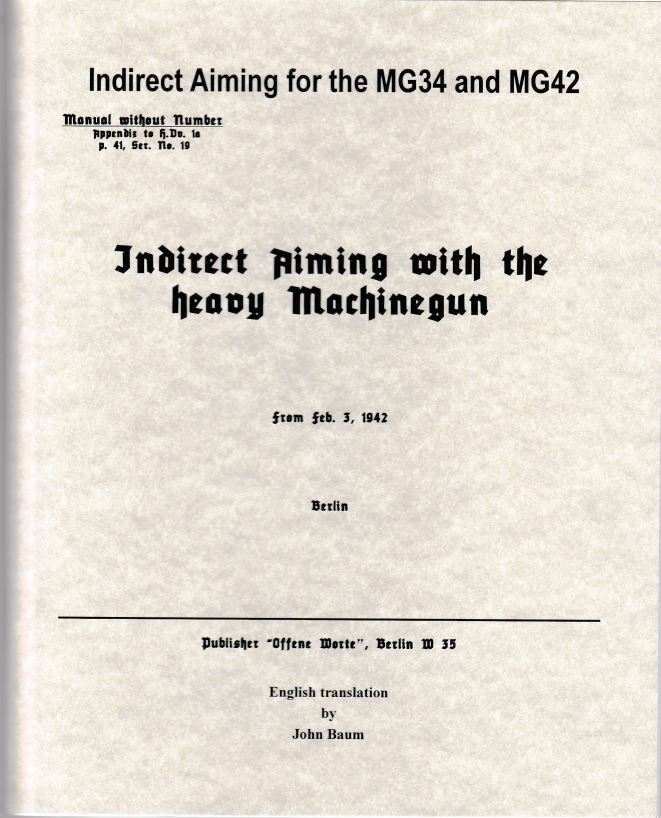
John A. Baum
5678 State Rt. 45
Lisbon, Ohio 44432
U.S.A.
(Translated by John Baum from the original German script.)
The use of the heavy machinegun in the fashion of an artillery piece to engage targets on the opposite side of a hill was perfected by the German army and used with great effectiveness in both world wars.
An almost forgotten fact of WWI is the enormous casualties the allies took just entering their trenches from indirect machinegun fire. The Germans learned the lessons of the use of the machinegun in WWI better than any other nation and in WWII they put many of these lessons to good use, employing their machineguns more effectively and at longer range than their enemies. Their methods are therefore well worth studying today.
Fortunately for those who want to learn, the WWII German army manual on the subject has been translated by John Baum, a researcher who has spent nearly two decades translating more than 220 different German army manuals from their original Gothic script. He has more than 50 different dictionaries which offer translations from German to English.
This 92-page well illustrated manual gives a clear picture of one of the means the German army used to inflict such frightful casualties on its enemies. It takes you through the whole course of instruction from the simplest field methods to the most complicated instruments used to deliver the precision of artillery out to 3500 meters with the 8MM Mauser cartridge.
All the principals of indirect fire and the tools used to effect it as well as their use are covered in explicit German detail.
Naturally using the machinegun as an artillery piece entails using the complicated artillery methods of laying down fire. This reached its peak in the Lafette 34 heavy machinegun mount adopted by Germany prior to WWII. Unfortunately, the U.S. Military wasn’t about to take the time to train its machine gunners that much dismissing both indirect machinegun fire and the marvelous Lafette 34 mount as “Too complicated.”
What do you expect from a military that has been plagued in recent years by .50 caliber M2 HB Browning machineguns blowing up because they won’t even train the troops adequately to do a simple job like headspacing a .50 caliber machinegun when they install the barrel?
This is indeed a complicated subject but so is using a field artillery piece and there are plenty of times when a steady stream of 8MM Mauser bullets is more practical and effective than trying to bring sufficient artillery and mortar fire on an area without losing a lot of it to counter battery fire. Artillery may be known as the king of battle but like all kings it is expensive to employ and is a primary target for the enemy’s artillery. A few machineguns can make a deathtrap out of crossing a stretch of ground cheaper and often with more efficiency than a like number of artillery or mortar pieces. This is a very important but neglected subject in this hemisphere and that makes this manual all the more important.—Jim Dickson



